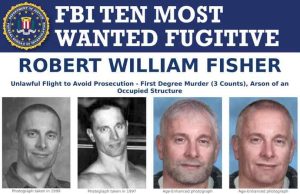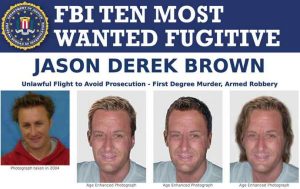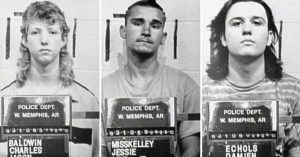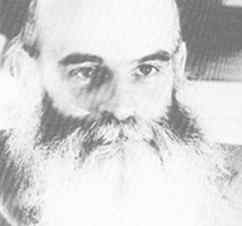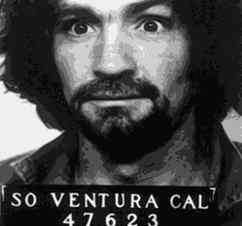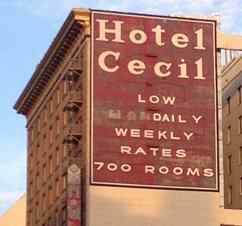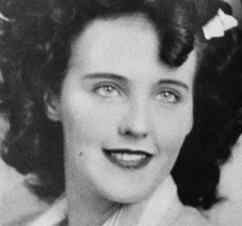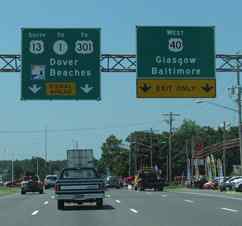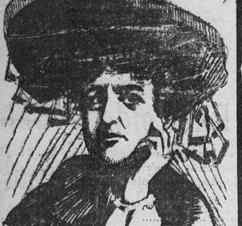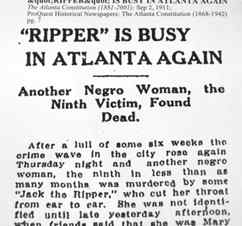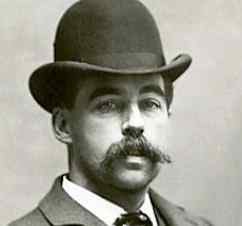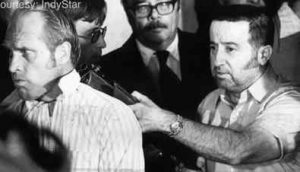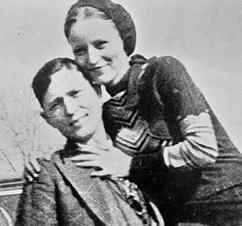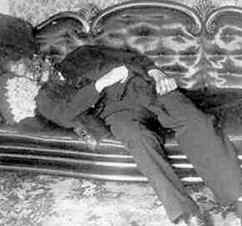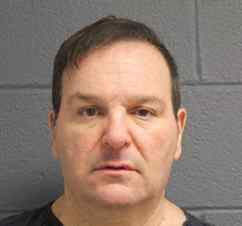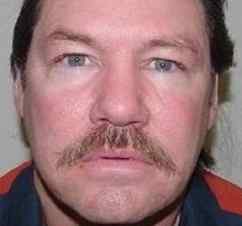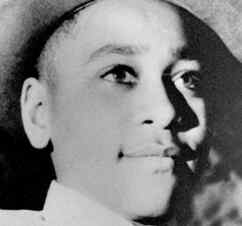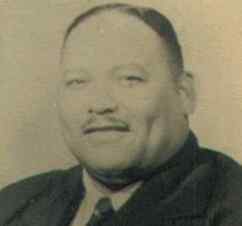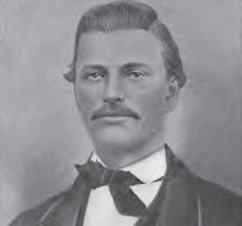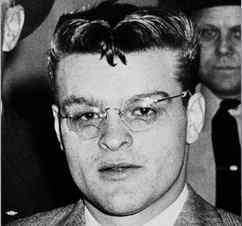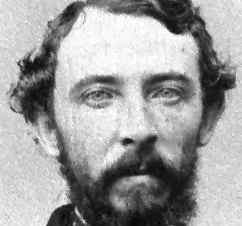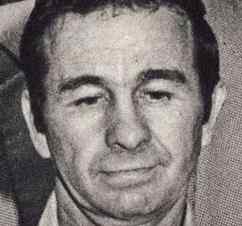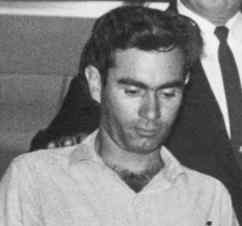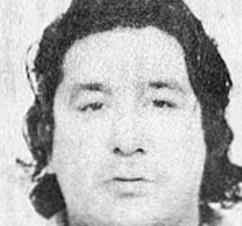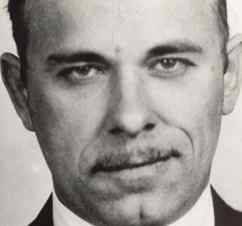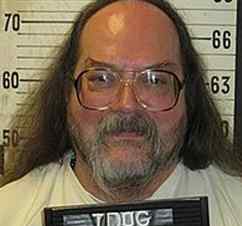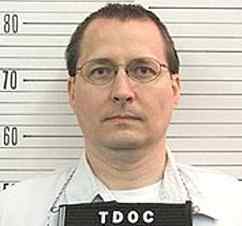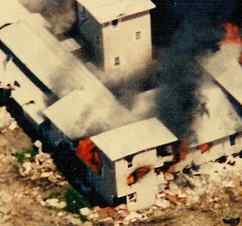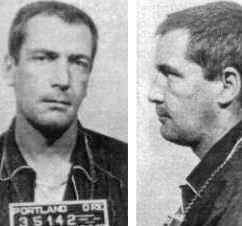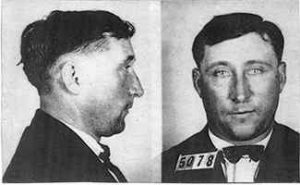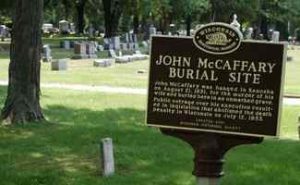Famous Murder Cases That Changed America

For this Fourth of July, The National Crime Scene Cleanup would like to honor America by chronicling the murder stories that helped shape its history. We’re not just the crews that arrive to clean up after a scene is closed, we’re also the crews that empathize and help families transition their lives in a very real, very overwhelming situation. We are on the front lines for you. We feel deep respect and sorrow to the affected families and hope they recognize how their tragedy helped shape history.
Table of Contents
- Alabama
- Alaska
- Arizona
- Arkansas
- California
- Colorado
- Connecticut
- Delaware
- Florida
- Georgia
- Hawaii
- Idaho
- Illinois
- Indiana
- Iowa
- Kansas
- Kentucky
- Louisiana
- Maine
- Maryland
- Massachusetts
- Michigan
- Minnesota
- Mississippi
- Missouri
- Montana
- Nebraska
- Nevada
- New Hampshire
- New Jersey
- New Mexico
- New York
- North Carolina
- North Dakota
- Ohio
- Oklahoma
- Oregon
- Pennsylvania
- Rhode Island
- South Carolina
- South Dakota
- Tennessee
- Texas
- Utah
- Vermont
- Virginia
- Washington
- West Virginia
- Wisconsin
- Wyoming
Alabama
Sweet home Alabama… unfortunately for Ronnie Van Zant, Alabama was not as innocent as he praised. Just as the song addressed, areas of Alabama saw some of the worst southern rife in violent racial crimes and corruption during the mid 20th century. While crime rates have stabilized in the Yellowhammer state, new historical crimes continue to make headlines in the 21st century.
The Birmingham Church Bombing (also referred to as the 16th Street Baptist Church Bombing) will forever be remembered as the convictions that occured much too late. The bombing occured at a children’s church while over a dozen children were in the church. Four African American children died, and around 22 were critically wounded. The worst part about this case was the several rulings defending Bobby Frank Cherry and other conspirators, despite damning evidence linking the event to them all.
The Halloween Killer (2005)
Andrew Reid Lackey, an Alabamian native, made local fame after breaking into the home of Charles Newman, an 80 year old World War II veteran, to rob him. Newman shot at him in self defense to which Lackey stabbed and shot him to death. Lackey was detained and convicted of capital murder during a burglary, capital murder during a robbery, burglary and robbery, and sentenced to death. In 2013, he had been the first person executed in Alabama after two years. His execution revisited the debate over lethal injection and slowed subsequent executions in AL.
Alaska
Despite being isolated as the northernmost state in the United States, Alaska faces some of the worst homicide rates in the nation. The pipeline boom in the 1970s flooded the state with capital and with it entered crime. Some of the most notable serial killers also started to surface around that time as well. Violent crime rates have remained double the nation’s average for years, while Alaskan property crime declined 28% between 2020 and 2022.
Robert Hansen, an Iowan native, was later known as “the Butcher Baker” after making headlines for committing murder. Of the many he committed, some of the most notable (and disturbing) would have to be the abduction of 30 Alaskan sex workers and exotic dancers, whom he later rape, fly out to a secluded area near his Anchorage property, and hunt as if they were wild game. One 17 year old managed to escape the airport when he wasn’t looking, which eventually led to a warrant and discovery of evidence from his home.
On September 28, 1994, Bonnie Craig, a 18 year old student, took her usual 45 minute walk to the nearest school bus stop. She was never late or absent to her first 7am English class, but that morning she never arrived. Later, her body was found floating in McHugh Creek. It took almost two decades for law enforcement to properly investigate and analyze the semen found in a sexual assault examination. Once the DNA from the semen had been placed into the CODIS national DNA database, Bonnie’s killer Kenneth Dion had been identified. Bonnie’s story is a strong contender to the difficulties family face during investigation.

Bonnie Craig (Left); Killer Kenneth Dion (Right)
Arizona
In terms of violence, Arizona has had a tumultuous time. The Grand Canyon State saw a significant rise in crime during the late 1900s but remained mostly under the national average all up until 2000. Arizona’s crime rates have fluctuated since with little alignment to the nation’s average, with recent years seeing state governments pushing to reduce the state’s average. Still, it’s unfortunately home to not one but two top most wanted American fugitives.
On April 10, 2001 in Scottsdale, Arizona, Fisher’s family was murdered and their home was bombed to cover up the evidence. Firefighters found the burned bodies of Fisher’s wife Mary and children Brittany and Bobby inside the home. Robert Fisher is thought to have been responsible after his mysterious disappearance around the same time. Some believe he is dead, for his wife’s Toyota 4Runner and family dog Blue were found in a remote area north of Payson, AZ. The FBI is less convinced, however, issuing an age enhanced photograph and $100,000 reward for information that leads to his arrest.
Jason Derek Brown quickly joined the FBI’s Top 10 Wanted Fugitive list when he fled the scene of an armored car heist. Brown shot and killed armored car driver Robert Palomares, effectively killing him, robbing him, and leaving the quiet Ahwatukee community in shock. It is believed Brown is hiding in a Mormon community, with a partner, or that he has fled the country. As of 2022, his whereabouts have yet to be found.
Arkansas
When the rest of the country was at its peak, Arkansas remained well under the nation’s average for decades. In recent years, however, the pandemic has erupted social and economic changes that have shown in the worst crime rates in the state’s history. Since 2020, AR’s crime rates sit around 670 per 100,000 people, or 40% above the national average. Despite the most recent trend, and its history with segregation, the fact that Arkansas has its own fair share of famous cases is still surprising given its quiet history.
Perhaps one of the nation’s most controversial murder case, the West Memphis Three consisted of three men that were tried as teenagers in the murder of three eight-year old boys. The prosecution asserted that the teenagers killed the three boys as a result of a Satanic ritual. The case received national attention for weeks, partially due to how the teenagers were arraigned. After being questioned for 12 hours, one of the boys admitted the three had committed the murders, but quickly recanted, stating that he had felt coerced, fatigued, and threatened by the police. Despite juror misconduct and emotional bias, the three served around 17 years behind bars before finally being offered a plea bargain after new DNA evidence emerged.
Bearing semblance to Charles Manson, Ronald Simmons is a serial killer forever burned into the consciousness of the American public. Simmons is best known as a mass murderer that attacked fourteen victims of his own family during Christmas, including his children and a daughter he had sexually abused. He continued to kill two others. He was charged with 16 counts of murder and sentenced to the death penalty. In 1990 he was executed by lethal injection and because his relatives didn’t claim his body, he was buried in a pauper’s grave.
California
California’s tropical trees and sunny disposition has a reputation also tormented by its historical cults, serial killers, and assassinations. Indeed, it seems the popularity of the state brings its own unique set of challenges in criminal justice and culture. The most dangerous city in terms of crime is thought to be Compton, and the most dangerous street in the US is said to be in Los Angeles between E. 5th St. and S. San Pedro St.
For years after his brother John F. Kennedy was assassinated, a very reluctant Robert Kennedy debated running for president after serving as NY senator for 3 years. Finally agreeing to take the bid to run, he was met with outstanding Democratic support. He had just addressed his supporters over winning the California Democratic primary when he was shot and killed by Sirhan Sirhan.
Cielo Drive will forever synonymously be remembered for the most memorable Manson murder. On the night of August 8, 1969, members of the Manson cult broke into the rented home of Sharon Tate and murdered her and her unborn child. In addition, several of her friends and an acquaintance was murdered. To this day, the carefree and completely nonchalant attitudes of Charles Manson and his followers have been forever burned in the consciousness of the American public.
The Cecil Hotel in Los Angeles has not just been the location for one criminal event but several. That’s what makes the location’s reputation a large point of interest to ghost hunters, true crime fans, and curious minds all over the world. Since its opening in 1924, it has had at least 16 sudden or unexplained deaths and potentially more than 2 murders.
The case of Elizabeth Short is usually referred to as the legend of Black Dahlia. In a field in Leimert Park, LA, a woman known as Elizabeth Short had been found severed in half on January 15, 1947 with no clues as to why. To this day, the story famously lives on, albeit never having been solved.
Colorado
For most of the late 19th and early 21st century, violent assault offenses in Colorado stayed below the national average. In fact, late country singer John Denver loved Colorado so much that he didn’t just write a hit song about it, he also based his stage name around it. Only in the past two years murder in Colorado has been up 47%, an all time high, but the state fondly remembered by Rocky High Mountain High has had its own troubling stories.
JonBenet Ramsey was a six year old child beauty pageant contestant found brutally murdered at her Boulder, Colorado family home. The Ramsey story is one of the most notorious murders and continues to intrigue people all over the world for its indubious evidence and circumstances. Several conspiracies over the case exist, and despite new forensic DNA technology, the case continues to raise questions. After trying for a match in 2016, not just one but two unknown DNA matches were made.
Gunshots startled the quiet homegrown Columbine community when, on April 20, 1999, two teenage boys shot 32 Columbine High School students before then shooting themselves to death. Authorities later discovered several bombs that failed to detonate inside the high school and later uncovered the duo’s detailed plans to bomb the school and shoot at escapees. The event reformed security in high schools and how law enforcement handles massacres.
Connecticut
In general, Connecticut has a violent crime rate 45% below the national average, making it one of the safest states in the United States. Despite being one of the safest, it does have a few landmark murder stories that have shaped our country’s nation, all occurring nearly 2 years apart from one another.
Cheshire, Connecticut Home Invasion Murders (2007)
A home invasion resulted in the murder of three people during the summer of 2007 when Joshua Komisarjevsky and Steven Hayes broke into the home of the Hawke-Petits’. Jennifer Hawke-Petit and her two daughters were raped and murdered by the duo. Hawke-Petit’s husband, Dr. William Petit was beaten unconscious but survived. The State of Connecticut sentenced the duo to two death sentences, but were changed in 2015 to life in prison after the state abolished the death penalty.
Hartford Distributors Shooting (2010)
The shooting occurred at a beer distribution company in Manchester, Connecticut. On August 3, 2010, 34 year old former Hartford Distributor employee Omar Thornton shot 8 of his co workers to death and injured two others with his 9mm semi automatic. Thornton called 911 and informed his motives were influenced by alleged racism he had encountered while working there. He shot himself in the head shortly after.
National media attention turned to the low profile town of Newton following a disturbing elementary school shooting. 20 year old Adam Lanza fatally shot and wounded 20 children and 6 school employees at Sandy Hook Elementary School, and then killed his own mother. The event seized the attention of the world and became recognized as one of the deadliest mass shootings in the US.
Mystic Massacre (1637)
Despite the fact this massacre occurred 139 years prior to the formation of America, the Mystic Massacre remains in the shadow of the American consciousness today. An estimated more than 500 Native Americans were slaughtered by the Governor of the Massachusetts Bay Colony in an act he referred to as “a thanksgiving”. Today, social media campaigns frame the event as the reason why Thanksgiving is a symbol of Native American victimization. In fact the holiday was federalized by Lincoln in celebration of unifying the country after the Civil War.
Steven Brian Pennell, aka The Route 40 Killer, was Delaware’s only discovered serial killer. Pennell was convicted for the murders of five women, but authorities suspect there may be more. Pennell abducted most of his victims near Bear, DE on Route 40, hence his nickname. Pennell was sentenced to the death penalty and was executed by lethal injection on March 14, 1992. He was the first person executed in Delaware in 46 years.
The Chocolate Candy Murders is an intriguing story that even brings a little foot traffic from ghost hunters every year. John Dunning was having an affair with a girl nine years his junior, Cordelia Botkin. Dunning’s wife Elizabeth Botkin left him after receiving anonymous letters by Cordelia detailing her husband’s affairs. One day, months after the divorce, Botkin received a box of chocolates and shared it with her family. Shortly after, Elizabeth and her older sister died of arsenic poisoning. However, no one else that ate the chocolate had any adverse effects. Police eventually traced the candies to a candy shop in San Francisco, and then to Botkin.
Florida
The Sunshine State has always brought a large amount of foot traffic to its beaches, tourist attractions, incredible summer homes, and wildlife. With its masses it attracts its own mixed culture and personality. Its eccentric culture has even gained a reputation for “Florida Man”, which refers to the alleged prevalence of Floridians doing crazy things.
Even Floridians seem to be concerned, with 59% of native Floridian fearing for their daily safety. Interestingly, violence in Florida hasn’t been that high. In fact, the 2022 FBI report shows violent crime has dropped 5% below the national average.
During the summer of 2011, there was not much else being broadcasted aside from the Trial of Casey Anthony. Casey Anthony had been put on trial for the murder of her toddler daughter, Caylee. All eyes watched as the story unfolded: Cindy, Casey’s mom, had reported her missing after a month. In the infamous case that held the eyes of over 40 million viewers, the jury acquitted Casey on murder and manslaughter but found her guilty on four counts of withholding information. Much to the outrage of the country, she served minimal jail time and many of her convictions were overturned.
A serial killer that mass murdered in several states. The infamous killer shocked the public when he admitted to killing 23 women, including two Chi Omega sorority sisters in Florida. Bundy escaped the case proceedings and then again in a Glenwood Springs, CO prison. After murdering the two sorority sisters in Florida, he was arrested and executed in an electric chair in Raiford, FL ten years later.
Atlanta Child Murders (1979-1981)
Perhaps one of the most saddest stories, 29 African American children went missing from the ages of 7-16 and were later found all dead in wooded areas around Atlanta. Mostly all were killed by asphyxiation. Later, two adults were found in connection to the murders during this time. Wayne Williams (above) was suspected to be the killer but was only convicted for the murders of the two adults.
Atlanta had another mass murder towards the beginning of the 20th century when 15 dead African American women were discovered with their throats slit. An additional six were later found. The murders stopped by the end of 1914. Although there were 6 suspects, none were convicted.
Well known for the 1983 CBS movie starring Johnny Cash and Andy Griffith, the real story of Murder in Coweta County involved a landowner named John Wallace and sharecropper named Wilson Turner. Wallace fired Turner after discovering he was bootlegging alcohol. Turner then stole two cows and money to allegedly get even for money owed to him by Wallace.
Wallace had Turner arrested then released. Upon release, Turner saw Wallace’s men and realized it had been a set up. Unable to escape because Wallace had drained Turner’s truck of gas, his truck stopped running at the county line. Multiple witnesses watched Wallace and his crew kidnap, murder, and then subsequently force black field workers to assist him in destroying the body.
This case is famous not only because it received wide press coverage in the rural community, but also because the case is truly historical. In 1946 it was unusual for an affluent landowner like Wallace to be given the death penalty, especially based on the testimony of two black men.
Hawaii
Isolated from the continental United States like its indigenous cousin Alaska, the small archipelago state has a mostly indigenous population of around 1.5 million. HI (pun intended) maintains part of its reputation as a friendly “Aloha State” with a violent assault crime rate 50% below the national average. Hawaii is a frequent tourist destination every year. It’s debatable on whether or not Hawaii has had any serial killers, but it definitely has seen its fair share of butchery.
The Xerox Murders (1999)
Bloodshed occurred in the Honolulu Xerox office one Tuesday morning in November 1999 when a copier technician killed seven men with his 9mm semi-automatic. The man known as Byran Uyesugi fled the scene and ran for the police for five hours before surrendering in the Honolulu mountains. He was sentenced to life without possibility of parole. He is being held at a facility in Mississippi due to inadequate accommodations at the Halawa Correctional Facility. Interestingly enough, the Xerox building was left abandoned until producers of the series Lost decided to use it in 2004.
Two prisoners escaped from prison and broken into the home of 68 year old widow Therese Wilder, murdering her in her home. This murder was unique, however, as the victim died from the aftermath of being left bound, gagged, and left unconscious in her bed. The case gets its fame from the area, Morgan’s Corner, which is said to be the site of urban legends and alleged hauntings. It was also an event that, at the time, left local communities debating capital punishment in the state.

Nuuanu Pali State Park, an area near Morgan’s Corner (Photo by Kansas Sebastian)
Idaho
Possibly due to its strong farming community, Idaho’s culture has always been set far apart from the rest of the US. Despite that, the Potato State is below the violent crime rate average by about 50% and boasts the least amount of residents concerned about violence. Indeed, there only appears to be a few memorable murder cases that have occurred there.
The disturbing events that occurred on June 30, 1987 W. Linden Street definitely remains in the consciousness of most Boise residents. Not a whole lot is known as to what caused the altercation. What is known is that the neighbor across the street called the police after witnessing a mortally wounded, bleeding civilian banging down his door.
The police arrived too late: the civilian, Preston Murr, had died in the house across the street. Murr had been dragged back into the house across the street by his “friends” Daron Cox and Daniel Rodgers, where his body was dismembered and then left in the Brownlee Reservoir. The killers were convicted and sentenced to life in prison.
The house still stands today, drawing some attention for suspected hauntings, though none of the later homeowners have reported such.

The Boise Murder House (Photo credit dlocksmith/YouTube)
The Murder of Angie Dodge (1996)
One of the infamous cold cases that has been featured on TV series such as Stranger Than Fiction was the Murder of Angie Dodge. 18 year old Angie Dodge was raped and killed in her home in 1996, opening an extremely turbulent case that resulted in the wrongful 20 year imprisonment of Chris Tapp. In 2019 justice was officially served when the right prisoner was sentenced to serve 20 years.
Illinois
The Prairie State might seem like mostly farmland from a bird’s eye view, but actually boasts a highly diverse economy. It has agriculture, coal, timber, petroleum, and serves as a major transportation hub. Thankfully, its hustle doesn’t appear to contribute to its murder rate, which sits around the national average. Illinois is unfortunately still connected to some of the most memorable American murders, thanks to its past ties to gangsters like Al Capone.
H.H. Holmes could be America’s first serial killer. Though the final count he confessed to was 27 murders, many have speculated that it could have been more. H.H. Holmes ran a hotel in Chicago, IL, ironically where the World’s Fair was being held in 1893. Holmes offered the mansion as a place to stay during the trip, to which he later used to murder his guests. He was hanged in 1986.
On the morning of February 14, 1929, seven men were found shot, one man fatally wounded, in an urban Chicago parking garage. Examiners determined the men had died firing squad style. The local community, already having tension towards the local police department, believed that Al Capone’s gang had been responsible, and not enough had been done to convict them. The St. Valentine’s Day Massacre has never been officially solved, but helped shape American history by serving as an example to the issues with Prohibition.
Indiana
Indiana is probably best known for the Indianapolis Colts, Indiana Pacers and hosting the annual Indianapolis 500. The Hoosier state has kept an impressive yet low profile reputation for its inspiring artists like Bob Ross. Singer R. Dean Taylor’s catchy hit “Indiana Wants Me” single was clearly inspired by Bonnie and Clyde and the state. Ironically, its violent crime rates are about the same as the nation’s average. Despite its modest visibility in the US, Indiana bears some shockingly memorable true crime headlines.
Indiana seems to have a penchant for perplexing true crime stories that have flirted with murder. Like the Speedway bombings, the Tony Kiritis incident thankfully resulted in no deaths, but has earned a mention as one of the most captivating extreme televised events in the union.
On the morning of February 8, 1977, an angry Tony Kiritis met with the president of Meridian Mortgage Co. about his mortgage. Unsatisfied by the conversation, Kiritis wired the barrel of a loaded shotgun to the back of mortgage company president Richard O. Hall. Kritis had also wired his own finger to the trigger so that if the police killed him or even jostled him the gun would go off. The pair walked through downtown Indianapolis for a long, televised 63 hours.
After almost three days of this, Kirits stopped and was arrested for kidnapping and other crimes. After he was released in 1988 he lived a quiet life in his Indianapolis apartment, free of further offenses, until he passed away in 2005.
Claypool Hotel Murders (1943; 1954)
Hotel murder is actually very rare, but you wouldn’t think so based given how many American hotels have made headlines throughout the years. The Claypool Hotel made headlines in both 1943 and 1954. The first incident involved a physical therapist from the Women’s Army Corps that remains unsolved. The second involved the discovery of a partially decomposed body that had been stuffed in a dresser drawer. It’s been thought the 18 year old Dorothy Poore had been lured to Claypool with the promise of a job.
Iowa
Keeping with its rural neighbors, Iowa has kept a decently low profile with a focus on agriculture. The Hawkeye state also follows the trend of being 25% below the national average in terms of violent assault crimes and only a whopping 28% residents feel concerned about gun violence. Iowa doesn’t really make headlines too often for heinous murders but certainly has had its moments.
The Sueppel Family Murders (2008)
In March 2008, Iowa City was shaken by the actions of Steven Sueppel. Steven made news first for embezzling thousands of dollars from the Hills Bank and Trust Company, a bank that he worked for. After he returned home that Easter Sunday night, Steven killed his wife and four adopted children. He called the police the following morning and sped his car into a cement pillar on I-80, killing himself.
“Cain and Abel” Murders (1975)
It’s been said that the “Cain and Abel” murders was one of the worst mass killings in the history of Iowa. Starting from the night of Halloween and continuing into the next day, Jerry Mark murdered his brother and his entire family in a way reminisct of the biblical Cain and Abel murders. Jerry was sentenced to prison, however, Jerry’s defense team has pointed out some good points of the evidence that don’t match up to DNA at the murder scene.
Kansas
With Kansas’ violent crime rates trending 25% above its 10 year average, Dorothy may have been naive to want to go home so quickly. Unfortunately the statistics hold true, the Wheat State ranks 5th most dangerous in the union. Its imagery of beautiful fields has realistically seen its fair share of trauma.
The Kidnapping of Bobby Greenlease (1953)
Bobby Cosgrove Greenlease Jr. was the six year old son of Robert Greenlease Sr., a multimillionaire auto dealer. It was always said that Bobby was a naïve child, which appeared to be true when, on September 28, 1953, Bobby trustingly went along with kidnappers that masqueraded as his aunt coming to pick him up from school. Robert later found a ransom note, demanding $600,000 ($6.1 million today). At the time, it was the largest amount ever demanded from a ransom in American history.
Unfortunately, Robert couldn’t have done anything about the matter even if he wanted to. His son Bobby had already been murdered by two perpetrators over state lines in Johnson County, Kansas. Still, he was taunted by the perpetrators over the phone, holding off police and FBI, and even paying the ransom hoping that his son would return. While the Greenleases’ never saw the return of their money, books like “Zero To The Bone” have offered damning speculation that investigators on the case may have helped themselves to part of the money.
Carl Hall and Bonnie Heady, two drug-addicted alcoholics, were later caught. Investigators determined the two had plotted to victimize the wealthy family for years. Upon arrest, they were found guilty and sentenced to the death penalty. The couple was one of the few murdered via gas chamber, and Bonnie Heady was the third woman to ever be executed by the federal government.
The case also tightened American school security, particularly by implementing stricter policies regarding who was allowed to pick up children.
The Bender family ran a general store and small inn in Labette County in the late 1800s. The story of the Bender family is incredibly mysterious. For ages speculation circulated that four family members had murdered at least 11 of their customers and scattered their bodies throughout Kansas. When investigation of the family began, the four German immigrants disappeared, never to be found again.
Dennis “BTK” Rader (1974-2005)
Dennis Rader appeared to be a family man with a steady job and a relatively quiet life. One of Dennis’ colleagues even once remarked that he had kept her feeling safe during one of their walks home.
Perhaps that is why it took the authorities so long to find him guilty of the murder of 10 people near Sedgwick County, Kansas between 1974 and 1991. He went known as “BTK”, short for his “bind, torture, and kill” method on his victims. BTK was also the alias he used to send anonymous letters detailing his crimes to local newspapers and authorities. In 2005, he was finally discovered after “BTK” left a message to the FBI using a floppy disk. The FBI used it to trace his location.
He was sentenced to 10 consecutive life sentences at El Dorado Correctional Facility.
Possibly the most infamous murder story of all time. The 1987 TV mini series “Murder Ordained” was inspired by the story of Sandy Bird, the wife of an Emporia, KS pastor whose body was discovered in the Cottonwood River. Mistakenly ruled a car accident, the case was reopened when Bird’s family members were also discovered along Geary County highway.
Kentucky
The Bluegrass State is fondly respected for its charming landscapes and strong equestrian community, as well as the Kentucky Derby. Although 78% of Kentuckians believe crime is increasing, residents, horses (and their owners) should sleep peacefully. The state is 35% below the national average and the lowest in the southwestern region. Overall, KY’s murder stories are not out of the ordinary, but there are some interesting oddities.
Three female hotel clerks were found dead on I-65 in Kentucky and parts of I-90 (making it the only known attack on the highway). It took until forensic DNA matching almost 20 years later to finally uncover the I-65 Killer was Louisville native Harry Edward Greenwell. He was discovered too late, for he had already died from cancer.
Betty Brown Lexington Cold Case (1961)
The murder of Betty Gail Brown of Lexington, KY has been said to be the most well known cold case in Central Kentucky. Just about four days before Halloween in 1961, Brown’s body was found in her car outside Transylvania University campus. She had been left strangled by her bra. The investigation included all campus students, but no witnesses or suspects could be identified. It became a cold case until 1965 when Alex Arnold Jr. confessed to killing Brown while traveling through town. The case became an example of the complexities in the law and how evidence is mishandled when Arnold ended up serving no time for Brown’s murder.
Louisana
Louisiana’s incredible food and music culture has always been rivaled by its historical struggles with poverty, race relations, and of course, crime. In fact, the Bayou State is considered the second most dangerous in America due to the highest homicide rate in the US since the 1990s. Louisiana’s struggles have certainly paved the way for legendary American stories.
Over the course of four years, Bonnie and Clyde were a dynamic couple that worked together to accomplish minor and major crimes all over Louisiana. For four years over the Great Depression era, the duo made headlines for robbing civilians, banks, gang violence, and successfully evading law enforcement. While the duo engaged in heinous, inadvisable crimes, it might be their clever team dynamics that leaves a fire in the heart of all American power couples.
Jeff Davis 8 (2005-2009)
Sometimes referred to as Jennings 8, Jeff Davis refers to the unsolved mystery behind the discovery of eight dead women in the swamps and canals of the Jennings area. The mysterious mass killings have been the subject of various true crime media, including movies, podcasts, TV series, and books.
Maine
Maine is known for its lobsters, role in the American Revolution, and vast, beautiful scenery. While many are drawn to Maine for these reasons, even having the nickname “Vacationland”, its tourism might even be too underrated. It is considered the #1 safest state in the nation. 77% of the Pine Tree State’s residents feel safe there, supporting its extremely low violent crime rate 75% below the nation average.
James Hicks may be Maine’s only serial killer. While it is thought he is linked to more, the killer plead guilty to murdering two women: Jeanie Hicks and Jerilyn Towers across Penobscot County. He was later handed a 55 year sentence for robbing and assaulting Lynn Willette in Lubbock, TX.
Lululemon Murders (2011)
The Lululemon murders occurred in the affluent city of Bethesda, MD, a suburb outside of Washington, D.C. An employee inside of a Lululemon store turned on her co-workers and raped, assaulted, seriously injured one employee. They slaughtered two others using utility knives, hammers, and an array of other equipment.
Massachusetts
Despite the early beginnings of tension between Native Americans and the pilgrims, modern Massachusetts is fairly safe to live in, with a violent crime of about 22% below the national average. Over the course of 2021, a reported 5% faced violent assault. The Pilgrim State is known for its American history and colonialism.. No matter how controversial, Massachusetts is where it all began for America, and with it comes its own true crime legacies.
The Craigslist Killer (2010)
Philip Markoff was a medical student at Boston University that ended up a notorious thief and murderer at the age of 23 years old. Over the course of a week, Philip Markoff killed three women he met off Craigslist at a Boston hotel, the Westin Copley Marriott. Markoff tried to end his life in his jail cell several times after his ex-fiance left him, and ultimately succeeded on August 15, 2010. The case has since been featured in TV, books, and movies, and was the nail in the coffin for the removal of the personals section from Craigslist.
The Borden murders remains a well known homicide in Massachusetts, despite the fact it happened over 100 years ago. The Borden’s were at their estate in Fall River, Massachusetts when they were brutally murdered with an axe by an unknown assailant. To this day the case has never been officially solved, but one suspect was their own daughter, Lizzie Borden. Lizzie was acquitted but remained a suspect to the community for the rest of her life.
Michigan
Michigan’s reputation is best remembered for its automotive hub in the US, and additional emphasis on education, agriculture, and even tech. Unfortunately, its diverse economy does not make it immune to murder. From the 1980s to the early 21st century, Detroit averaged 452 homicides a year. Detroit was the most dangerous city in America until 2016, when it was overtaken by St. Louis. Michigan has some interesting stories to tell.
Robert Bashara had the attention of the entire nation when he was convicted for murdering his wife. The bizarre details of the case is likely what caught the nation’s attention, as his reasoning was so he could live as a BDSM master and rule over his girlfriend and other women. The investigation also later revealed he was trying to put a hit on a hit man.
The Ypsilanti area has always been known for its University of Michigan campus and culture, not for violence. It shocked the community when seven women, aged 13 to 21, were found assaulted, slaughtered, abducted, raped, and killed by strangling or stabbing in the Ypsilanti areas between 1967 and 1969. The conviction of John Norman Collins, also known as the “Michigan Murderer” or the “Co-Ed Killer”, brought some relief to residents, even though he was convicted for only some of the murders in the area. There have also been connections with Collins to another girl killed in California that he was never tried on.
Minnesota
Home to 11 indigenous tribes, lakes, prairies, and beautiful deciduous forests, the Land of 10,000 Lakes may be one of the best states to live and raise a family in. Minnesota is not only one of the safest in the union, with a violent crime rate of roughly 30% under the national average, it’s also highly praised for its standard of living and education. Its diverse economy also makes it one of the richest in the nation. It’s unusual that MN murderers triggered any major trauma to American history.
On May 25, 2020, George Floyd was an African American being arrested for the dispute of a $20 counterfeit bill. Bystanders recorded and watched as Minneapolis police officer Derek Chauvin, assisted with 3 other cops, knelt on his neck and back for 9 minutes and 29 seconds. Floyd was heard on the video saying “I can’t breathe”. He died from a cardiopulmonary arrest as a result of the physical pressure on his neck.
The murder of George Floyd is not just a story; it’s a serious example of how American racism continues today. His story has left ripples of local and national riots, protests, and memorials continuing around the world today.
Murder of Carol Thompson (1963)
The conviction of Carol Thompson’s murder shook the peaceful, cultural and community oriented Twin Cities. Twin Cities in the early 60s rarely ever saw such attacks. It was even more bizarre that the perpetrator was a lawyer. Carol Thompson was the wife of T. Eugene Thompson, an affluent well known lawyer. An Korean War vet eventually confessed to attacking and murdering the woman with one other man, and admitted that her husband orchestrated the murder. Her husband was convicted with the other two assailants.
Mississippi
Mississippi is 37% African American, making it the largest African American state in the country that boasts a strong civil rights heritage. The Hospitality State stays true to friendliness with violent crime rates 27% below the national average. But unfortunately, it is plagued with a negative reputation of being the lowest ranking in the south for its standards of living. It ranks so poorly for so many things that other states created the adage “Thank God for Mississippi” because it prevents them from taking the lowest rank. There’s been a fair share of “Thank God [That Was In] Mississippi” in terms of historical homicides as well, mainly centered around the Jim Crow era.
During the 1950s, the south was quick to misrepresent situations, especially when they involved African Americans. Emmett Till’s story was unfortunately no clearer. It’s been thought that 14 year old Till was visiting the area from Chicago, and, naïve to the Jim Crow laws in the area, flirted with a white cashier for a minute. Shortly after, he was beaten and shot by two men. The men were tried but acquitted by an all white male jury.
Lee was an advocate for black voting rights, and thus, had many enemies in the area, including the KKK. His killer was never convicted, of course, but what is suspected is that Reverend Lee was shot and killed by white supremacists while driving through his hometown of Midnight, MS.
Missouri
Missouri’s nickname Mother of the West is aptly given considering the mixture of cultures from Virginia, Kentucky, Tennessee, and German immigration in the early 1800s. Its perfect blend of midwestern and southern cultures has given MS its own personality, but recent times have challenged safety. As of 2022, Missouri is 25% above the nation’s average for violent crime. Since racial tension came to a peak in 2015, homicide and other crimes in St. Louis has propelled it above Detroit’s long reputation as the worst homicide state in the nation.
Kansas City Massacre (1933)
Gangs had just started to really form during the Great Depression and Kansas City was really feeling the effects of it in 1933. The massacre resulted in the death of four police officers and a criminal fugitive called Frank Nash. The FBI identified three gunmen but some evidence indicated that one identified gunman was not actually involved. The case was never fully resolved. It has been thought, however, that the shootout against the cops was the retaliation of Nash’s gang.
Marsden Murders (1883)
Jefferson County will never forget Mack Marsden. A livestock trader from a remote area in Jefferson County, Mack left many accomplishments and controversies. The trader not only became known for arson, robbery, and murder, but was also commissioned to survey and gravel Lemay Ferry Road, the main route to St. Louis. He was also commissioner of a beautiful red barn bridge connecting Sandy Creek, which today is displayed as a historic landmark inside a state park.
He seemed to have fallen into crime as a result of the crowd he was connected with, as it was common at the time for farmers to steal livestock. His offenses led to murders until one day it all came to a halt. On the way back from transporting livestock to his home, he and his brother were fatally shot. Mack’s brother Allen survived for two days and identified who had killed them, but the two ended up being acquitted. To this day, no one has been convicted for the murders.
Montana
Montana has never been known for commerce. In fact most of Montana enlisted in World War II to escape poverty as the agricultural economy closed its eyes. Now, Montana’s economy is assisted by a growing tourism sector, thanks to Montana’s reputation for large open spaces and incredible sky views. It has rightfully earned it the unofficial nickname ‘The Big Sky Country”.
The Big Sky Country is the third least populated state with a total population of 1 million – 400,000 less than Hawaii! 63% Montanians feel safe despite a violent crime rate of 15% above national average. Thankfully this is likely due to the disproportionate population and incidences of crime. Despite that, MT has hosted a few bizarre and disturbing cases, most which haven’t been solved.
One of the most highly publicized murders in the Yellowstone area. Miranda Fenner was brutally assaulted, raped, and murdered with a knife while she was working at a video rental store in Laurel, MT. Disturbingly, her case remained unsolved for almost 20 years with no arrests or suspects. In 2017, police arrested Zachary O’Neil after he admitted he was responsible. He also admitted to disposing of the knife in Jordan, MT while on a camping trip with his father.
Possibly one of the most disturbing, horrifying headlines was the Morris Davis homicide. Morris Davis delivered pizza to a house that ended up being a set up. When Morris arrived, the house turned out to be vacant. He was ambushed at the front door, fatally shot 9 times, and robbed. Even more horrific, no suspects were ever arrested and the case still remains unsolved.
Bozeman was pioneering Montana before it was even admitted into the union. In the mid 1800s John established trails throughout southwestern Montana, including the Bozeman Trail. While traveling the Yellowstone River, John was murdered. His murder was never resolved. In fact many historians debate whether it was local natives or a jealous business partner. Bozeman, MT was named after his contributions to the area.
Nebraska
Nebraska is prone to extreme weather, from violent thunderstorms to tornadoes in the spring and summer, and warm winds in autumn. The climates are split between humid and semi arid. It’s amazing Lewis and Clark had survived the trek given all obstacles. The Cornhusker State earned its nickname for its strong agricultural economy, especially with corn. With a violent crime rate 17% below the nation’s average, Nebraska isn’t really known for murder. It has had some notable headlines despite that.
One of Nebraska’s few “spree killers”, Charles Starkweather was born, raised, and worked in Lincoln, Nebraska. He killed ten women over the course of a week in January 1958, and similarly to Bonnie and Clyde, was accompanied by his 14 year old girlfriend. Starkweather was executed by electric chair and was the last execution in Nebraska until 1994. His story also influenced future crimesters that gained national prominence, including the kidnapping of Charles Lindberg’s son.
Nevada
Without a doubt the most arid, largest desert state in the nation, facing droughts, water crises, and climate change. Nevada really is what characterizes the wild west: known for its legal brothels, gambling, lenient marriage and divorce laws, all which have attracted tourists to Las Vegas. Nevada has also had a close association to silver, which has earned it the official name “The Silver State”. There’s been a 6% drop in violent crime and now The Silver State sits at just 13% above the national average. Nevada has many high profile stories and controversies, especially where famous murders are concerned.
Tupac Shakur has been regarded as one of the most significant rappers of all time. Unfortunately, Tupac was heavily involved in gangs, drugs, and other criminal matters. He had survived shootings in the past but on the night of September 7, 1996 he was not so lucky. The rapper had been in Las Vegas to celebrate his business partner’s birthday and see the Mike Tyson match. While driving in Vegas, he was fatally killed in a drive by shooting. Many conspiracies surrounding his death have emerged and his high profile murder has been the feature of many documentaries and shows.
On July 25, 1972 Bill Coulthard left his law office in Las Vegas and he entered his car. A car bomb set up in his car denotated as soon as he started in the ignition, and he instantly died. Las Vegas’ past with gang violence appears to go hand in hand with the city of sin. And despite suspects and speculations that it played a role, the case has yet to be solved. It has since became the most infamous car bombing in Nevada history.
New Hampshire
With a violent crime rate of around 62% below the national average, the state of New Hampshire is easily considered one of the safest states in the nation. And thank goodness, too, New Hampshire’s incidental tales with mass murder should not detract from the beautiful scenery. Thousands of hikers and nature lovers come to enjoy it every year.
The 1980s were rough and unusual for the Claremont, NH area. Six women went missing and their bodies were eventually found stabbed to death. Authorities suspect the homicides are responsible for that of a single serial killer. While there have been two suspects, the case has remained cold.
New Jersey
A pivotal state in the defense of the patriots during the American Revolution and now a hub for the manufacturing industry, NJ has quite the reputation. The densely populated state is exposed to the culture and corruption of the tri state area. Aside from Atlantic City, it’s not exactly America’s #1 tourist resort, either. Ironically, violent crime in New Jersey is 50% below the nation’s average, making it the 5th lowest rate in the nation. On par with its conflicting reputation, New Jersey has some interesting murder stories to share.
The kidnapping of famed aviator Charles Lindbergh’s baby made headlines when Charles discovered only a ransom note in his 20 month old son’s bedroom at his Hopewell, NJ home. The story took another turn when a retired Bronx school principal John Condon volunteered to be an intermediary between Lindbergh and the kidnapper. Despite arranging the ransom drop off, the skeleton of Charles’ son was found in the woods near his estate. Someone was ultimately convicted, but many weren’t convinced they had the right convict.
America’s defense for free speech and civil rights makes the case of Charles K. Landis very interesting. Not only was Landis a prominent landowner, he was named after an area outside of Vineland–Landisville, NJ. He was also the founder of the newspaper Vineland Independent. Landis had a long standing feud with his editor Uri Carruth. Carruth published an inaccurate editorial suggesting that Landis would be committing his wife to an asylum, all but without naming her. Landis shot Carruth in the back of the head and was later acquitted for reasons of insanity. Landis lived a quiet life afterwards, but did go on to help develop Sea Isle City, NJ.
New Mexico
New Mexico boasts a strong economy thanks to its rich oil and gas resources. The state is also known for cattle ranching and has been used in the past for government missile testing, including the first atomic bomb test. It is also incredibly mysterious and has been the subject of many UFO sightings. The Land of Enchantment may sound misleading to some, as not only is it mostly alpine, it also has the second highest violent assault rate in the country. New Mexico is 48% above the national average in terms of violent crime. It definitely has its own skeletons in the closet (pun intended).
On the second day of February in 2009, a woman walking her dog noticed a bone that resembled a human femur emerging from the ground of a construction site in West Mesa, NM. She immediately alerted the authorities, who later confirmed they were human bones. The discovery led to the uncovering of 11 women and one unborn child. It was the largest mass grave discovered in the US. It took nearly a year to identify all the women, and unfortunately, most nearly all of them were Hispanic.
Tara Leigh Calico of Belen, NM went missing during a bike ride on Highway 47 in Valencia County. Her case has been the subject of America’s Most Wanted, Oprah, and other documentaries. The case is extremely disturbing and mysterious. What’s unusual is Tara’s cassette tape was found by the side of the road, and a photo was found in a convenience store parking lot in St. Joe, FL. It showed a young woman and boy with duct tape over their mouths. Some have claimed the photograph resembled Tara. Tara’s body was never found and so much time has passed that the speculation is that she was murdered.
New York
The city that’s so nice they named it twice. As Frank Sinatra sang, making it here means making it anywhere. How ironic that Sinatra was involved with the mob. Either way, New York City is the most populated city in the USA. The state boasts a population of close to 8 million, has many major landmarks, endured many changes, drama, and hardships. When crime rose from the 1970s to the 1990s New York felt it the worst. Today, New York is about 10% below the national average. It certainly has some past memorable historical homicides.
The Amityville house remains the topic of discussion and intrigue to horror, paranormal and true crime fans worldwide. The house on 112 Ocean Avenue in Amityville was the home where 23 year old Ronald DeFeo Jr. used a rifle to gun down his parents and four siblings in their sleep. The killer confessed to his deeds but later gave reasons of insanity, claiming there were voices in his head instructing him to do it. He also claimed the murders were spurred by his sister and that he murdered her in self defense. The following family had extreme allegations of paranormal activity, all of which have been dispelled by subsequent tenants that claim false rumors. The home has even had the address changed to prevent drive-by traffic, but that hasn’t stopped its tale from being featured in many books, movies, and documentaries.
Kitty Genovese was a bar manager returning to her apartment in Kews Gardens, Queens when she was brutally attacked and murdered by a man who had been following her. The case became infamous due to a NY Times story that claimed 38 “law-abiding citizens” had witnessed her murder and did nothing to help her. The police had actually been called at least once, and an investigation determined that there were 6-7 not 38 alleged bystanders and none had actually seen her murder. The incident promoted the concept of bystander effect and urban apathy for several decades.
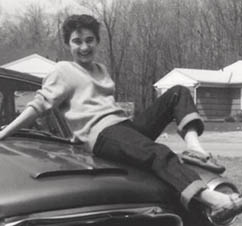
A Photo of Kitty Genovese
It’s been over 25 years since the first killing and the Long Island serial killer has still not been convicted. His legend really haunts the shoreline beaches of NY. Only the bodies of his victims have been found, a total of 10 women ages 20 to 27. Some of the women were found in Manorville and Fire Island. A few have still yet to be identified. To this day investigators have been unable to tie together the case.
North Carolina
North Carolina was one of the first 13 colonies to enter the union and was the location for various freedom documents and declarations. Ironically, it was also one of the eleven states to join the Confederacy. After the Civil War, North Carolina showed the world a heavier than air airplane could be piloted and flown. Today, NC is a frequent living and tourist destination for its cost of living, beautiful nature, and climate.
North Carolina’s violent crime rate is around the national average, despite a majority of the residents reportedly feeling concerned about their safety. Perhaps it is because it has hosted some bizarre murder stories.
The Joan Little story became the focus of books and civil rights movements. The case was interesting because Little, an African American woman, confessed she slaughtered her jailer, a Caucasian male, with an ice pick because he had tried to sexually assault her. Little’s case was a landmark case for it made her the first woman in America to be acquitted by reason of self defense against sexual assault.
Barbara Stager was considered to be a devoted wife and church leader living in Boone, NC with her husband and family. Her husband reportedly slept with a gun under his pillow. One night the gun went off and killed him. A terrible accident? Perhaps not. Ten years later, after Stager remarried, the same situation happened. This time, the jury found her guilty of first degree murder with a prison life sentence.
North Dakota
North Dakota is best known for its rich natural resources, including oil. The Peace Garden State is mostly prairies, badlands, savanna, and farmlands. It is the second least populated state. Violent crimes are about 17% below the national average. Perhaps thanks to its remoteness, North Dakota has some fame for serial killers and other homicides.
Eugene Butler was a wealthy homeowner in Niagara, ND. For years he struggled with mental health issues before finally being committed to an asylum. He died in 1913 while in the asylum. As his estate was being sorted, the remains of six dead teenage bodies were discovered in his home.
Minot has had a long, interesting past for many reasons. One of the reasons why is because of the Prohibition era. The town was infested with murder, bootleggers, prostitution, and opium dens. Al Capone had stationed his bootlegging plants in the town. Crime was so bad that many compared the town to Chicago at the time–hence the nickname “Little Chicago.” It also became known nationally as the crime capital of North Dakota. Thankfully, the city has done a 180, leaving no trace of its history, only the tales.
Ohio
With an abundance of jobs and an interesting mix of culture and industrial sectors, many hearts are in Ohio. The Buckeye State has also been the birthplace to seven presidents and is home to tourist attractions. In terms of violent crime, Ohio is 22% below the national average. It has unfortunately hosted some of the most horrifically memorable serial killers.
Dahmer is easily one of the most memorable serial killers in the United States. The killer is infamously remembered for the killing, dismemberment, and even cannibalization of seventeen different men and boys. A majority were in Wisconsin, one was in Ohio. Dahmer was convicted and sentenced to life in prison, but he ended up murdered in his prion cell by Chris Scarver in 1994.
Oklahoma
Oklahoma is best known for its natural oil, gas, farms, and few manufacturing plants. Nearly two-thirds of the state live in Tulsa or Oklahoma City, the two urban centers. Oklahoma isn’t really known for much else, which probably explains why Oklahoma has about the same national average in terms of violent assault. Surprisingly it has seen its share of horrific murders.
Prior to 9/11 attacks, the bombing was the deadliest terrorist attack on America. Two American veterans launched an attack on a federal building in Oklahoma City, killing 168 people (including 16 children in the building’s daycare center). The bombing shook the nation and prompted the government to sign several legislations to heighten security around federal buildings and tighten the punishments for such acts.
Three young girls between the ages of 8 and 10 were raped and murdered while at Camp Scout. Their bodies were discovered on a trail leading to the camp showers. Disturbingly, the main suspect Gene Leroy Hart was acquitted for the murders by an unanimous jury. Almost 50 years later, using new DNA testing technology, more evidence was brought against Hart. Still, no charges have been made.
Oregon
Oregon is likely best remembered in history for the Oregon Trail, which led settlers from the eastern US to the west coast. It is also one of the most geographically diverse in the union, with volcanos, bodies of water, forests, and even deserts. It does well in the agriculture, fishing, lumber, and tech sectors. In the sense of crime,Oregon is only 15% above the nation’s average, rendering it safe… to a point. Oregon has seen perturbing killers.
Perhaps one of the most chilling cases of filicide, Diane Downs appeared at a Springfield hospital on May 19, 1983 calmly claiming she and her children had been fatally shot in a carjack. Disturbed by her calm demeanor and the fact witnesses had seen her driving to the hospital at 5mph, Diane was arrested and brought in for questioning. The investigation concluded she was guilty for the murder of her daughter and was sentenced to life in prison. During her trial, Diane was pregnant with her fifth child, and gave birth to her ten days prior to her sentencing. The child was seized by the State of Oregon and adopted by a childless couple.
Diane escaped prison four years later but was captured in Salem ten days after her escape. She has been in a California prison since.
Pennsylvania
The Keystone State is aptly named for being home to many significant American landmarks. Not only was Pennsylvania one of the original 13 colonies, it hosted the signing of the Declaration of Independence, and was a battlefield for major turning points in the American Revolution. Pennsylvania has been and continues to help America’s economy circulate, connecting north, south, and western Appalachian cultures. In terms of violence, PA boasts a crime rate 2.5% below the national average. Despite that, it has bore the scars of some perturbing murderers.
On the morning of February 20, 2009, Jordan Brown, aged 11, was arrested for shooting his then pregnant father’s fiancée. The procedures Lawrence County takes to file a murder initially charges as an adult, regardless of age, so Brown was initially charged as an adult with potential of a life sentence. Brown was detained in a juvenile facility in Erie, PA for about three years before he was tried as a juvenile. He was found guilty of being a delinquent in April 2012. Brown’s conviction was later overturned 5-0 in 2018, after serving almost a decade in prison.
Rhode Island
Rhode Island is the smallest state in the United States with a strong historical dependence on its seafront. Today, it is the home for several large corporations, including Hasbro and CVS. In terms of violence, Rhode Island is 42% below the national average. Surprisingly, it has seen serial killings.
Craig Prince was 13, just two years older than Jordan Brown, when he killed his first person. Prince was far more premeditated, deranged, and disillusioned, however. The Warwick killer murdered three other women from when he was 13 to 15. He calmly confessed to the murders during his investigation, and he bragged about “making history” upon release. He is considered the youngest serial killer.
South Carolina
South Carolina was one of the 13 colonies and has a long deep agricultural history with cotton. South Carolina is known for its southern hospitality with rebellious streak, having been one of the first states to secede and join the confederacy. Perhaps its southern toughness is the reason violent crime in South Carolina is 24% above the national average. This state has some stories to tell.
Gaskins is one of the south’s prolific serial killers and remains present in the consciousness of the Florence County community. Prior to murdering 15 people throughout the 70s and 80s, Gaskin had a long list of prison sentences for assault, burglary, and statutory rape. 10 of the people he murdered were under the age of 25. He was executed by electrocution on September 6, 1991.
Lee Roy Martin became synonymous with the nickname “Gaffley Strangler” after his conviction for the strangulation and sexual assault of 4 women. He received a lifetime sentence cut short when he was stabbed to death by his inmate in prison.
South Dakota
South Dakota is best known for being the location of Mount Rushmore in Keystone. South Dakota is the 5th least populated in the US, with its largest city, Sioux Falls, having a population of around 187,200. Its violent crime is 25% above the national average and has a shocking amount of horrific tales to share.
Leonard Peltier is still referenced for his significant role in the American Indian Movement, the non profit he helped establish to protect Native Americans from police brutality. Leonard Peltier was sentenced to two life terms after murdering two FBI agents on the Pine Ridge Indian Reservation.
John Dilinger was the lead gangster of the Dilinger Gang and remembered for his advanced schemes and extreme actions. While Dilinger did not kill anyone in SD, he put South Dakota in the national spotlight when his gang robbed $49,500 from a Sioux Falls bank in 1934. He murdered a number of innocent people in other states that were uncovered years later. He eventually died from fatal gunshot wounds inflicted during one of his shootouts.
Tennessee
Much like its neighboring southern states, Tennessee is a fair mix of urban and agricultural, but is set apart for its significant contributions to music, art, and alcohol. Indeed, the state’s economy has been greatly bolstered by the production of Tennessee whiskey, and the branding has created a reputation synonymous with the spirit’s smooth flavor. Unfortunately, Tennessee’s reputation for violence has never been quite as smooth, and even in 2022 it remained 67% above the national average.
The body of seven year old Paula Key Dyer was tragically found raped and asphyxiated in her Knoxville home. As Irick was supposed to be babysitting her, all attention turned to him. Irick was found under a bridge and confessed to killing Paula. His requests for acquittal on grounds of insanity were denied, and he was sentenced to death shortly after.
Only in America would there be a politician so desperate to win office that they legally changed their name to fit their campaign. Byron Looper was one of them. “Low Tax”, as he legally changed his name to, went even one step further when he shot his opponent Tommy Burks. The TN politician’s active Klu Klux Klan membership surfaced during the investigation. He was convicted and sentenced to life in prison, which he served to his death in 2013.
Texas
The Lone Star State earned its name for being its own independent country, prior to being admitted to the union in 1845. Texas certainly does keep that pride and spirit as a former country, in culture, economy, and history. The state is synonymous with the Texas cowboy persona. Its boisterous persona doesn’t appear to affect its violent assault rates, which came in around the national average. There are still some history altering stories that the state has hosted.
His counsels had cautioned President John F. Kennedy from campaigning in Texas, especially in an open motorcade, but President Kennedy was determined to connect with his Texas voters. The President was shot in the head while waving at his supporters as his limousine driver took him through Parkland Heath.
The assasination was history altering and culturally significant for a number of different reasons, from the fact he was assassinated in broad daylight to the fact many conspiracy theories have been offered. Additionally, JFK was considered a favorable president with an approval rating of 83% at the time. His assasination signaled a turning point in our country’s modern history.
Another history altering national event was when the town of Waco was seized by the US military. A religious sect known as the Branch Davidians were suspected to be violating firearm regulations. The siege initially began as a stand off but progressively became more aggressive as the religious group continued to hold out. Eventually there was a shootout that killed 6 Branch Davidians and 4 special agents.
After days of ongoing tactics, the siege finally ended when the compound broke out in flames and gunshots were being heard from inside. 80 Davidians were found dead inside the charred compound, including 20 children. Most shared similar gunshot wounds, suggesting there may have been a mass suicide.
What’s unfortunate is that prior to and even after the invasion, the area of Waco had issues with other major criminal cases.
Utah
In the US, Utah is synonymous with its unofficial nickname of “the Mormon State”, but it does boast more than just a large Mormon community. Overall Utah is one of the fastest growing, perhaps in part due to its growing economy and low incidences of violence. The Mormon State is 35% below the national average for violent crimes and has only a few incidents of major homicides.
The rural and urban area of Santa Fe, New Mexico was facing film industry strikes in the Fall of 2021. When the media reported a prop gun had fired real shots on October 21st, 2021 during the filming of Rust (2021) starring Alec Baldwin, the strikes were initially associated. Later, authorities determined that the event was an accidental shooting that injured director Joel Souza and killed cinematographer Halyna Hutchins. In early 2023, Alec Baldwin and his armorer were charged with two counts of involuntary manslaughter. An assistant director also faced additional charges relating to the negligent use of a deadly weapon.
This famous crime scene reignited nationwide discussions of gun control and the necessity of using a real revolver in the film industry. For the NCSC crew, it was one of our most memorable cleanups.

Crime Scene Photo: Roses on the Set of Rust (2021)
Gary Gilmore robbed and murdered a gas station clerk in Orem and a hotel manager in Provo. His execution drew national attention as the first execution following a 10 year ban on capital punishment in the US. He was also one of the few executed by firing squad.
Reputation damaging documents about the Mormon church were at risk of being circulated in the 80s. The church paid Mark Hofmann large amounts of money to secure and obtain them to prevent circulation. Instead of obtaining them, Hofmann fooled Morman scholars and church leaders with forged documents. In 1985, when the document collectors realized Hofmann was a counterfeiter, Hofmann mailed two packages containing bombs to the collectors that set off and killed them. He was sentenced to life in prison.
Vermont
If you think Vermont is sweet only for its maple syrup, you clearly haven’t met its nature or its people. Vermont is truly a breathtaking state set apart from New England by remoteness and its agricultural based economy. Despite being the second least populated in the US, Vermont has the least residents concerned about becoming a crime victim, and with good reason. Vermont falls 57% below the national average in terms of violent crime–but that certainly doesn’t mean it’s lacking in a good murder story or two!
The East Middlebury Murders happened nearly 100 years ago but has resurfaced in recent local true crime novels. The triple murder that was discovered on Route 116 has never been solved, and, even with the remains, the two victims have never been identified.
Virginia
Historically significant, geographically and economically diverse Old Dominion is home to over 8 million, with the majority living near the coast. While the culture of Virginia can be felt in all corners of the state, the conditions really vary depending on the part. Despite its perception as the seventh most safety concerned state, the violent crime rate is actually 47% below the national average. There are still some very notable, chilling tales true crime aficionados like you can enjoy.
The incident involving the Beltway Snipers happened inside and outside of Washington D.C.. It was an event that shook America because of how close to the capitol the attacks really were. The incident involved two young killers John Allen Muhammad and Lee Boyd Malvo. The pair went on a tour, starting from Ashland, right outside the Richmond, Virginia area, all the way up to Maryland (around Baltimore) killing a total of 17 victims. There were preliminary shootings that also occurred in several other states as well, including Arizona, Louisiana, Washington, and Georgia.
A sad story given the circumstances, four former U.S. Navy sailors were convicted for the rape and murder of Norfolk resident Michelle Moore-Bosko while stationing at the Norfolk naval station. The quartet turned out to be wrongfully convicted, but it took years of appeals and the confession of the actual killer Omar Ballard in 2000 before the group were rightfully freed.
Washington
From the Seattle needle to the beautiful Evergreen forest ranges, Washington has earned a reputation for its tourism. Washington state also has an excellent reputation for being progressive, even rivaling California on the West Coast. The Evergreen State is not just beautiful, it also boasts an incredibly diverse economy, and is one of the wealthiest in the union. Where violent crime is concerned, it’s not surprising Washington is 27% below the national average. Sadly, Washington’s seemingly heavenly reputation is juxtaposed with its famous serial killers, many which are homicidal sex offenders.
Also known as the Green River Killer, Gary Ridgway was a Salt Lake City native and Utah resident for most of his life. He moved to Washington after he returned from the Vietnam War. Ridgway never quite adapted to life after the war. The killer started raping and killing women after his return. When he was finally convicted in the late 90s, it was confirmed that he had killed at least 71 women, with speculation the number could be well over 90 victims. Ridgway is most likely the most serious serial killer America has ever seen. He is sentenced to life in a Colorado prison.
Dodd was convicted of sexually assaulting and murdering three boys in Vancouver, Washington. He had been discovered trying to abduct a third boy at Camas. WA movie theater. His diaries, later found by the police, left detailed accounts of each assault. He plead guilty and received the death penalty. On January 5, 1993, Dodd was the first legally hanged in the United States since 1965.
West Virginia
John Denver, who had never visited WV, was very perceptive when he prayed the lonely landlocked state of West Virginia would find its home. The Mountain State has faced many issues of political corruption, financial setbacks, and isolation as a result due to a number of reasons. Despite the stereotypes around its culture, West Virginia’s violent assault rate is only 10% below the national average. WV’s serial killing cases aren’t even as striking as other murderers, but nonetheless still chilling.
Harry Powers emigrated to the US with his parents from Ireland. Powers got married and purchased a home in the small town of Quiet Dell. Despite his marriage, Powers put out ads seeking lonely hearts looking for love. In reality, his intent was to rob and murder them. He was convicted and executed by hanging in Moundsville. Powers’ story has also been told as The Lonely Hearts Killer and has been featured in movies and novels.
It’s rare to see a serial killer being murdered by a sex worker, but the Neal Falls case may fit the category. There are many interesting facts to the Neal Falls case, like the fact he was a transient that had been stopped without charges by 20 different state police. It was only after he moved to Charleston, WV when he was caught. Falls held a sex worker at gunpoint in her home. The sex worker managed to get the gun out of his hand and shot him. Police searched his car and found several murder weapons, all which have been thought to have caused the homicide of an upwards of 8+ other victims.
Wisconsin
America’s Dairyland is appropriately named for its reputation and leading export of dairy products, including cheese and milk. Wisconsin’s economy is very diverse with income from many manufacturing sectors, including tech and tourism. Where violence is concerned, Wisconsin is 20% below the nation’s average. Despite its low incidence, Wisconsin has seen a surprisingly high amount of serious killers.
John McCaffary was arrested for drowning his wife Bridgett to death in a cistern at their Kenosha, WI home. McCaffary was sentenced to the death penalty. Though McCaffary’s case was a lot like many other uxoricides (the act of killing a wife), McCaffary’s story was groundbreaking. He was the first and only person that has been executed in Wisconsin.
Scarver was already serving a life sentence at the Columbia Correctional Institution in Portage, WI for shooting a Wisconsin Conservation Corps employee. His fame comes from the murders he committed in prison. Scarver used a 20 inch metal bar from a piece of exercise equipment in the prison gym to kill notable serial killer and inmate Jeffrey Dahmer. He also murdered Jesse Anderson.
Wyoming
Depending on how you look at it, or what you know, Wyoming can either be hilariously paradoxical, or disturbingly deliberate. The Equality State was coined as the first to allow women to vote and elect a female governor. The irony is the massive wealth inequality issue. The top 1% earn 132 times the rest of the population. While large vacation homes owned by wealthy families saturate urban areas, the rest of Wyoming is mostly struggling farms.
Irony aside, fortunately Wyoming has some of the lowest rates of violence in the country. Wyoming is 42% below the national average. The few mystifying cases WY has seen are harrowing.
Gabby Petito and her fiancé Brian Laundrie went on a cross country road trip in a 2012 Ford Transit. Petito had been vlogging their travels and on Youtube and Instagram. It looked like a dream come true. Off the camera, though, the two had been experiencing some troubles, and were even stopped once by the police for behavior that appeared like domestic abuse. Matters culminated when Laundrie returned home without her, without giving reason or whereabouts on where she was. After she was reported missing the entire nation took to various social media outlets to piece together the case. With a month and a half of international public pressure on the investigation, Petito’s body was found where the couple had been camping–in Jackson, Wyoming at Grand Teton Park. Laundrie later died by suicide in Florida and journals confessing he had murdered her were found along with his remains.
The Gabby Petito case was groundbreaking for several reasons. Not only did it leverage viral exposure of social media to help solve the case, it also brought to attention how law enforcement needs to be more effective in domestic abuse situations.
The tiny town of South Pass gained a fair amount of foot traffic during the 1860s thanks to the gold miners were finding in the mountains. Polly Bartlett, originally an Ohio native, settled into South Pass to start an inn for the miners. The Bartlett Family’s scheme was far from innocent: they would take in the miners and poison them with arsenic laced steak. When they died, the Bartlett’s would rob their gold. After years of their operation, the Bartlett’s operation was discovered in the disappearance of Barney Fortunes, the son of a wealthy mine owner. The investigation concluded that the Bartlett’s had robbed and murdered over 20 miners, including Fortune. Polly was shot by Fortunes’ boss during the proceedings and her father, having fled to the mountains, was shot by a lawman.
There are never good reasons to commit a homicide against an innocent person. As a part of the nationwide emergency response unit that bears witness to these events first hand, we’re all too familiar with the trauma it leaves in communities and families. We send our prayers to the families of all affected.
The National Crime Scene Cleanup Association is always dedicated to protecting the safety of our communities. Please also take a look at our other resources to stay safe. If you enjoyed the article or appreciate what we do, we would greatly appreciate sharing this article with your friends and family on Facebook, Instagram, or elsewhere.
Sources Used:
https://www.onlyinyourstate.com
https://www.safewise.com
https://en.wikipedia.org/
https://www.adn.com/arts/books/2021/03/13/the-true-stories-of-12-notorious-alaska-murder-cases-makes-for-a-chilling-but-gripping-read/
https://unsolvedmysteries.fandom.com/wiki/Bonnie_Craig
https://www.usatoday.com/story/money/2020/01/13/most-dangerous-states-in-america-violent-crime-murder-rate/40968963/
https://www.azfamily.com/page/notorious-arizona-killers/
https://www.axios.com/local/nw-arkansas/2021/10/15/violent-crime-rate-hits-all-time-high
https://la.curbed.com/maps/los-angeles-murders-true-crime-scenes
https://www.axios.com/local/denver/2021/09/28/colorados-violent-crime-25-year-high
https://www.latimes.com/archives/la-xpm-1999-nov-03-mn-29234-story.html
https://ktla.com/news/nationworld/man-gets-life-in-prison-for-1996-cold-case-murder-rape-of-18-year-old-angie-dodge-in-idaho-falls/
https://www.indystar.com/story/news/2017/06/09/notorious-crimes-indianapolis-area-history/365132001/
https://www.insider.com/true-crime-us-2018-4
https://www.kansas.gov/kbi/stats/docs/pdf/2020%20Crime%20Index.pdf
https://www.wibw.com/2021/04/07/kansas-named-among-most-dangerous-states-as-crime-rates-rise-nationally/
https://murderpedia.org/male.H/h/hicks-james.htm
https://www.mnopedia.org/event/murder-carol-thompson
https://www.findagrave.com/memorial/52199197/george-william-coulthard
https://www.nj.com/entertainment/2017/04/new_jersey_most_notorious_murders_of_all_time.html
https://allthatsinteresting.com/amityville-horror-house
https://www.wbtw.com/news/state-regional-news/south-carolinas-most-prolific-serial-killers/
https://espnsiouxfalls.com/six-of-south-dakotas-most-notorious-criminals/
https://suncommunitynews.com/news/18230/vermont-murder-most-foul/#
https://www.ranker.com/list/worst-crimes-in-texas/mariel-loveland




